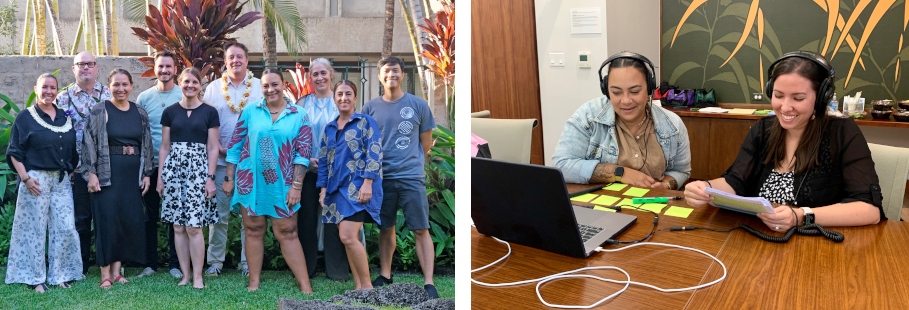A recent workshop trained nonprofits on the essential elements of podcasting, and telling human stories through audio.

At the Hawaiʻi Community Foundation (HCF), one of our main goals is to be a supporting partner to nonprofit organizations across the Islands, helping to build capacity and equity, and maximizing impact in our communities.
That’s why we recently hosted a one-week audio storytelling workshop that covered the essentials of audio recording, editing, and broadcasting, to help a small group of local nonprofits build their storytelling skills.
As you probably already know, one of the main challenges for nonprofits is getting their message out into the world in a way that changes hearts and inspires action.
These days, our attention is consistently stolen by a barrage of information that hits us from every corner—from online news to TikTok videos. It’s more important than ever to be able to hold people’s attention long enough to share your message, create a feeling—and even have your audience do something about it. That’s where audio comes in.
Listening to human voices, imagining the visuals in your mind, and hearing emotions creates an intimacy and authenticity that establishes a lasting connection.
This is a phenomenon that we think nonprofits can really benefit from when telling their stories. Whether it’s starting up a podcast, sharing content on social media with audio clips, or adding engaging interviews to articles and newsletters, knowing how to effectively record and broadcast the human voice can be a real game changer. As someone on an episode of Radiolab once said, “Sound is touch at a distance.”
From November 7 through 11, 2022, we hosted staffers from a small group of Hawaiʻi nonprofit organizations at our downtown Honolulu headquarters for a hands-on workshop in which they each created their own short podcast episode.
Our instructor was noted podcast expert Rob Rosenthal, who has taught documentary audio reporting and storytelling for over 20 years at the Salt Institute for Documentary Studies and the Transom Story Workshops. Rob guided the class step-by-step through the process of recording and producing a short, talk-show-style podcast. We learned everything from setting up a portable recording kit, to putting an interview subject at ease, to selecting and editing together audio clips into a cohesive story.
It was a jam-packed week, but the stories that came out of the work sessions were riveting. One attendee interviewed a Native Hawaiian woman who has become one of the first female hale (traditional Hawaiian house) builders in modern times. Another spoke with a mother whose son’s experience with the carceral system led her to found a nonprofit advocating for an aloha-based approach to criminal justice.
Each snippet of audio we heard was compelling and packed with real-world experiences—we’re excited to see what comes next for the nonprofits that attended.
Staff at HCF took the opportunity to learn, as well. If you’d like to hear an example of a podcast our content specialist, Michael Keany, created during the workshop, check out the episode below, in which he sits down with HCF vice president of strategic communications Sheila Sarhangi to talk about the foundation’s approach to ethical storytelling.